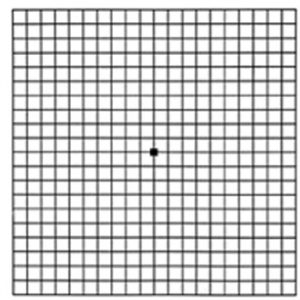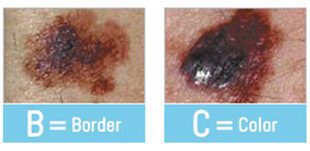

Age-Related Macular Degeneration Risk Factors
• Age: 50’s and older
• Smoking
• High blood pressure
• Family history of AMD
• Being overweight
• Excessive sun exposure
• Caucasians with light eyes and fair skin
• Diet’s high in saturated fats and high glycemic carbohydrates
Types of age-related macular degeneration
There are two main types of age-related macular degeneration: Dry (atrophic) and Wet (exudative). The dry form is most common, and vision loss with this type is gradual. The wet form is more rare, responsible for 10% of AMD cases. Vision loss can occur much more rapidly with wet AMD.
What causes macular degeneration?
Macular degeneration can occur as a part of the natural aging process. While there are different types of macular degeneration, the most common type is age-related macular degeneration (AMD). The exact cause still remains unknown, and no treatment has been found as of yet that is 100% effective.
Symptoms
Different people can have different symptoms, and some may not experience obvious symptoms in the early stages. The most common include:
• Words appearing blurred
• An “empty” area forming in the center of one’s vision
• Straight lines begin to look distorted
One of the simple ways of testing your vision at home is with an Amsler grid.
To use the Amsler grid, follow these steps once a day, every day:
1. Wearing any glasses you normally use to read, hold the grid 12 to 15 inches away from your face in good light.
2. Cover one eye.
3. Look directly at the center dot with your uncovered eye and keep your eye focused on it.
4. While looking directly at the center dot, notice in your side vision if all grid lines look straight or if any lines or areas look blurry, wavy, dark or blank.
5. Follow the same steps with the other eye.
6. If you notice any areas of the grid that appear darker, wavy, blank or blurry, contact your ophthalmologist right away. He or she will check to see what’s going on with your AMD and to begin treatment if appropriate.
Doing this simple at-home eye test once a day, every day can help save your vision.
What happens if you’ve been diagnosed?
If you’ve been diagnosed with macular degeneration, your optometric physician will refer you to one of our retina specialists. Your retina specialist will evaluate your condition to determine the best treatment plan for you.
The National Eye Institutes AREDS & AREDS2 studies
Researchers with the Age-Related Eye Disease Study (AREDS) reported in 2001 that a nutritional supplement called the AREDS formulation can reduce the risk of developing advanced age-related macular degeneration (AMD). The original AREDS formulation contains vitamin C, vitamin E, beta-carotene, zinc and copper.1
In 2006, the same research group, which is based at NIH’s National Eye Institute, began a second study called AREDS2 to determine if they could improve the AREDS formulation. They tried adding omega-3 fatty acids, as well as the antioxidants lutein and zeaxanthin, which are in the same family of nutrients as beta-carotene. The researchers also tried substituting lutein and zeaxanthin for beta-carotene, which prior studies had associated with an increased risk of lung cancer in smokers. The study found that while omega-3 fatty acids had no effect on the formulation, lutein and zeaxanthin together appeared to be a safe and effective alternative to beta-carotene.1
Adding supplements can help, but it’s always best to speak to your physician first. If you don’t need eye supplements, taking them can cause other issues to arise.
Quigley Eye Specialists, founded in 1988, consists of more than 70 medical professionals, including surgeons, optometrists, retina specialists and technicians. Offices are conveniently located throughout Southwest Florida in Fort Myers, Cape Coral, Lehigh Acres, Bonita Springs, Naples, Port Charlotte and Punta Gorda.
For more information, call (855) 734-2020 or visit www.QuigleyEye.com.
Quigley Eye Specialists
675 Piper Blvd., Naples, FL 34110
(855) 734-2020 | www.quigleyeye.com
About Quigley Eye Specialists
Technology leaders in eye care, Quigley Eye Specialists is one of the nation’s leading multispecialty ophthalmology practices specializing in cataracts, laser cataract surgery, glaucoma, iLASIK, dry eye, eyelid surgery, retinal issues, corneal conditions and routine eye care. As the number one choice for cataract treatment in Southwest Florida, Quigley Eye Specialists is committed to providing the highest level of quality eye care and service to the community. The practice has served the region for more than 30 years and offers patients convenient locations throughout Southwest Florida including Bonita Springs, Cape Coral, Fort Myers, Lehigh Acres, Naples, Port Charlotte and Punta Gorda.
Source:
1. AAO, “Healthy Eyes,” Vitamins, American Academy of
Ophthalmology aao.org, 2019
https://www.nei.nih.gov/areds2
 Southwest Florida's Health and Wellness Magazine Health and Wellness Articles
Southwest Florida's Health and Wellness Magazine Health and Wellness Articles

